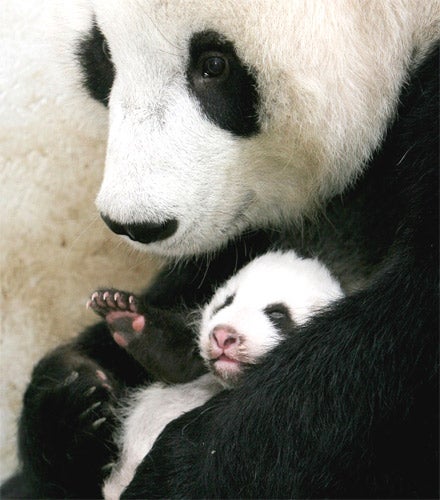Record breeding year for the bears who hate to mate

Your support helps us to tell the story
From reproductive rights to climate change to Big Tech, The Independent is on the ground when the story is developing. Whether it's investigating the financials of Elon Musk's pro-Trump PAC or producing our latest documentary, 'The A Word', which shines a light on the American women fighting for reproductive rights, we know how important it is to parse out the facts from the messaging.
At such a critical moment in US history, we need reporters on the ground. Your donation allows us to keep sending journalists to speak to both sides of the story.
The Independent is trusted by Americans across the entire political spectrum. And unlike many other quality news outlets, we choose not to lock Americans out of our reporting and analysis with paywalls. We believe quality journalism should be available to everyone, paid for by those who can afford it.
Your support makes all the difference.The very existence of China's pandas has long been threatened. The bears are famously terrible breeders and constantly endangered in their natural habitat. But their numbers have been boosted by a record number of births in captivity this year.
Yo Yo, a giant panda, gave birth to healthy female twins at the Wolong panda research centre in Sichuan province last week, bringing to 19 the number of pandas born at the centre so far this year, already beating the previous record of 18 born in 2006.
"Right now, we're breeding about the same number of pandas each year," Tang Chunxiang, an expert at the Wolong panda reserve, told the Associated Press. "We want to steady the numbers to avoid inbreeding since there are so few pandas."
Mr Tang attributed this year's record number of births to better research on panda nutrition, artificial insemination, genetics and creating a more natural habitat for the pandas to thrive in. Using artificial insemination, researchers have been able to increase the number of animals in captivity to more than 300 in recent years – a number that experts say should remain constant.
The giant panda is one of the world's most endangered species and is found only in China. The country's State Forestry Administration estimates that there are just 1,600 pandas in the wild, mainly in the mountains of Sichuan province.
Just like everyone else in China, pandas tend to follow a one-child policy. Females generally give birth to just one offspring after a pregnancy lasting about 160 days, with the cub weighing as much as an apple when it is born. Females are not equipped to care for two cubs and when two are born, the mother will often abandon one or crush a cub in its sleep.
It's also very difficult to tell if a panda is pregnant, given that a baby panda is just 1/900th of its mother's weight when it's born. Gestation also varies in length; one panda at the centre was pregnant for 324 days.
A national emblem that supposedly brings good luck, the panda is a potent symbol in China, where they are called da xiong mao ("big bear cat"). But they are notoriously poor breeders – they spend most of the year on their own, except during a three-month mating season, which begins in March each year. Female pandas have only three days a year during which they can conceive, while some males never succeed at natural breeding, so artificial insemination has become common practice when breeding captive pandas.
With such a brief fertility period, the female likes to play hard-to-get.
Male pandas suffer from a chronic lack of sex drive – more than 60 per cent show no sexual desire at all in captivity, and only a tenth of them will mate naturally.
Zookeepers have even resorted to using videos of mating pairs in the hope that "panda porn" will help the bears get frisky, although scientists say the films don't have much effect.
There have been efforts to reintroduce the pandas to the wild, but none have been successful. And three years ago, Xiang Xiang, the first zoo-raised panda released into the wild, was killed, aged five, probably by other pandas.
Join our commenting forum
Join thought-provoking conversations, follow other Independent readers and see their replies
Comments